Do you ever fumble for the right remote just to adjust your soundbar audio? Consolidating devices like your Firestick and soundbar under one controller saves major headaches.
Luckily, it’s possible to command your soundbar volume from the Firestick remote itself after some quick pairing and configuration.
Let’s dive into the steps for assigning volume control so you can simplify your home theater remote situation once and for all.
How to control soundbar volume with Firestick remote

The key to controlling soundbar volume with a Firestick remote is to first pair the devices either directly via Bluetooth or by enabling HDMI CEC capabilities.
This allows wireless communication between the peripherals.
Then the volume buttons on the Firestick remote can directly raise, lower, and mute audio coming from the connected soundbar speakers.
We’ll explore the specifics of the pairing process more below.
Pair Soundbar with Firestick Remote
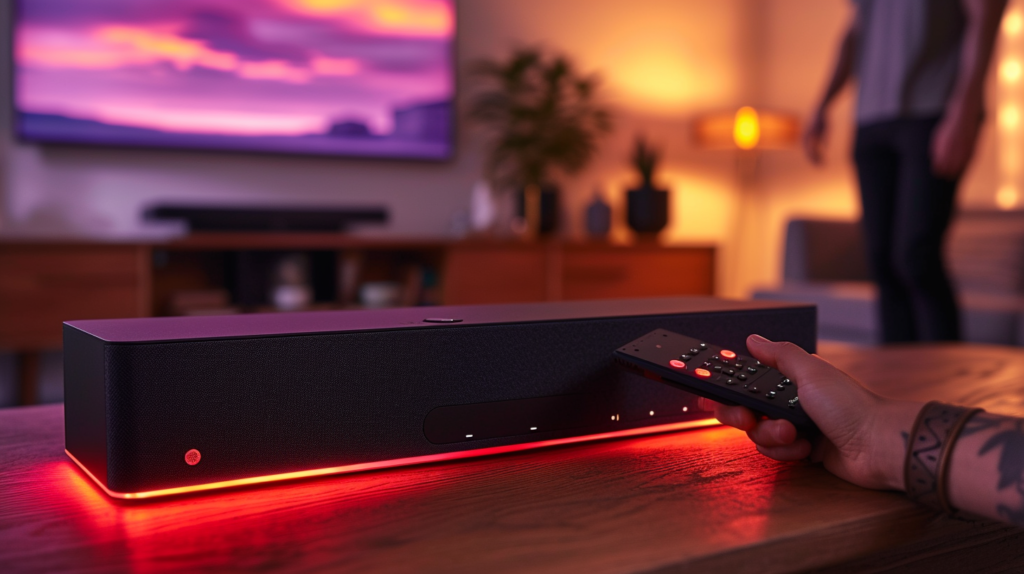
The first step to enabling volume control of your soundbar using the Firestick remote is to pair the devices.
Put your soundbar into pairing mode by following the instructions that came with your specific model.
Often there is a “pairing” or “connect” button located on the back or side.
Press and hold this for a few seconds until the soundbar enters pairing mode, usually indicated by a blinking LED light.
Once the soundbar is in pairing mode, grab your Firestick remote and press and hold down the home button for several seconds.
This will cause the Firestick remote to enter its own pairing mode.
Follow any on-screen pairing prompts that appear to complete the process.
Depending on the devices, you may need to enter a 4 or 6 digit pairing code.
If the pairing is successful, the Firestick remote can now control basic functions like volume up, volume down and mute on the soundbar without needing the original soundbar remote.
The volume buttons should automatically work without any additional setup.
Adjust Volume with Remote
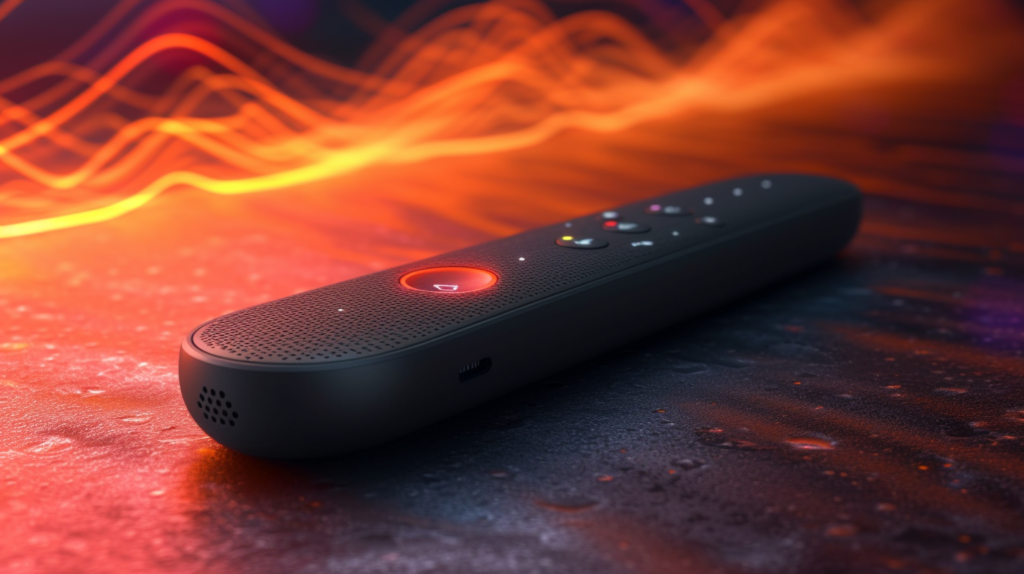
Now that you have successfully connected and paired your Firestick remote with the soundbar, you can start controlling the volume using the Firestick remote.
The volume up and volume down buttons on the Firestick remote will correspondingly increase or decrease the volume levels on the connected soundbar.
You can continually press these volume buttons as needed to raise or lower the soundbar audio to your desired listening level.
The volume typically changes in increments with each button press.
Holding the button down will often continuously raise or lower volume as well.
The mute button in the middle of the volume buttons can be used to quickly mute the audio coming from the soundbar speakers.
Press it again to unmute and resume sound.
Using the intuitive volume controls on the Firestick remote is often more convenient than having multiple remotes for different devices.
Since it’s already in your hand for navigating the Firestick interface, you can seamlessly control both the streaming and audio levels.
The Firestick remote essentially eliminates the need for juggling multiple remotes.
Set CEC Control

In addition to manually pairing the Firestick remote and soundbar, you can also enable HDMI Consumer Electronics Control (HDMI CEC) settings.
This allows interconnected CEC-enabled devices to be controlled by a single remote, without needing to manually pair each one.
To enable CEC functionality, go into the settings of your Amazon Firestick, TV, and soundbar and enable the HDMI CEC options.
This may be labeled differently on some devices as “Anynet+”, “Bravia Link”, “Simplink” etc.
Refer to each device’s instruction manual for specifics on activating CEC settings.
Once enabled across devices, the Firestick remote can then control essential TV functions along with the soundbar volume, without any manual pairing required.
The volume buttons will work automatically to control volume up/down or mute on the connected soundbar through the CEC connection.
Troubleshoot Issues
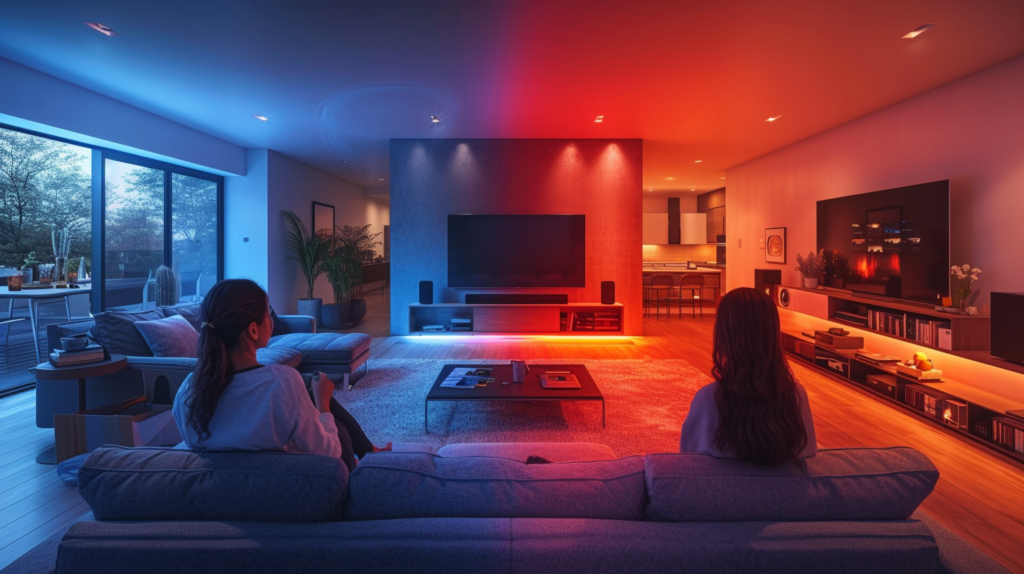
If you’ve gone through the pairing or CEC setup but are still unable to adjust your soundbar volume using the Firestick remote, there are a few troubleshooting tips that may help resolve issues you’re experiencing:
First, verify that the HDMI CEC settings are enabled on each device – the Firestick, TV, and soundbar.
Check that the correct HDMI input or output ports are being used with CEC capabilities.
Toggle the CEC settings off and back on if needed to reinitialize the connection.
You can also try unpairing and repairing the Firestick remote with the soundbar using the steps outlined above.
Go through the pairing process again in case the connection was not properly established.
Additionally, switching to a different HDMI port on either the TV or soundbar may resolve certain issues if there is a compatibility problem with the current configuration.
Use alternate ports and new HDMI cables if possible for testing.
Alternative Control Options

If you continue having difficulties getting the Firestick remote to control your soundbar volume, there are a couple alternative options that can be used:
You can always revert to using your original soundbar remote instead, if it came with one.
This dedicated remote is designed specifically for that model soundbar and will consistently be able to adjust volume levels or access other settings.
However it is less convenient than having volume control consolidated through the Firestick remote.
Additionally, many TVs have secondary volume controls accessible through general audio settings.
Use your TV remote to navigate to sound options where you may find an independent volume level adjuster.
This could alter overall volume that is passed from the TV speakers to the external soundbar speakers.
Lastly, accessing the menu settings directly on the soundbar itself also typically provides options to manually change general volume levels.
Use the buttons located right on the soundbar to boost or lower volumes to acceptable levels if the remotes are proving to be difficult.
Though accessing rear ports on the soundbar makes this solution less than ideal.
Why Pair Soundbar with Firestick Remote
There are a few key conveniences that come with pairing your soundbar to be controlled by the Firestick remote.
Having a single remote that can toggle both the streaming box and corresponding audio is far simpler than using multiple remotes.
You no longer need to juggle your TV remote, Firestick remote, soundbar remote, and potentially other device-specific remotes.
Instead the Firestick remote becomes your centralized solution for watching movies, TV, and adjusting sound levels for an overall enhanced user experience.
It also streamlines connectivity by eliminating line of sight issues that can occur from infrared remotes.
By using Bluetooth to pair and connect, the Firestick remote does not need direct line of sight to the soundbar for adjusting volumes which is very helpful if equipment is housed in a media console or storage cabinet out of view.
The Bluetooth connection will reliably work up to 30 feet away.
Tips for Volume Control
Here are some additional pointers for properly adjusting and controlling soundbar volume levels using the Firestick remote:
– Slowly increase or decrease volume gradually – avoid large volume jumps
– Lower TV volume all the way down then use Firestick remote buttons to control soundbar levels
– Make sure audio output is set to external speakers rather than TV speakers
– Disable TV speakers so all audio is passing through to the soundbar
– Balance soundbar audio and vocal clarity based on seating position
– Use mid-range volume levels for clear sound without distortion
Take the time to find the optimal volume range for your setup that provides quality audio output without being uncomfortably loud levels for viewers.
Everyone’s hearing sensitivities, room size and layouts differ – so some tweaking is required to customize based on your preferences.
What is HDMI CEC
Consumer Electronics Control, more commonly referred to as HDMI CEC, stands for Consumer Electronics Control.
It is a feature of the HDMI specification that enables interoperability between electronic devices in an interconnected HDMI ecosystem.
When HDMI CEC is enabled across peripherals like a TV, soundbar, streaming device, and Blu-ray player, it allows for unified control from a single device remote.
So if HDMI CEC is activated on your smart TV, Firestick, soundbar, and other media components, the Firestick remote can then become a centralized control hub.
This eliminates the need for multiple remotes.
HDMI CEC leverages the existing HDMI cables connecting devices to transmit both audio/video signals as well as control signals that enable synchronized functionality.
The specification uses a low-bandwidth bidirectional communication link over HDMI to pass commands between CEC-compliant products.
Why Go Through Pairing Process

You may be wondering why you need to go through the pairing process between the Firestick remote and soundbar rather than just relying on HDMI CEC control alone.
There’s a couple reasons why manually pairing the remote is recommended as well:
For one, the pairing process helps initialize direct communication between the remote and soundbar over Bluetooth.
This provides more reliable wireless control rather than just relying on passing signals through connecting HDMI cables which could introduce latency.
Bluetoooth has a wider range which gives more flexibility for remote placement.
Additionally, while many devices now include HDMI CEC capability, there are still products with compatibility issues or limited feature support.
Pairing guarantees volume commands are directly received by the soundbar rather than relying on middle-man transmission.
The manual pairing also ensures both devices can communicate on the same wireless frequency.
So leveraging both CEC and device pairing helps provide more robust control mechanisms for adjusting volume on your entertainment system using the Firestick remote as a centralized solution.
HDMI CEC Considerations
While HDMI CEC capability aims to conveniently consolidate control to a single remote by relaying signals between interconnected devices, there are some limitations to consider as well:
– Feature implementation can vary across brands
– Some products offer limited CEC functionality
– Setting up the connections can be complex
– Troubleshooting problems introduces more variables
– CEC may unintentionally turn devices on/off
So weigh the pros and cons when evaluating if setting up HDMI CEC makes sense based on your specific devices and how you use them.
For most basic volume control of a streaming box and soundbar, manual pairing may provide the most straightforward solution.
But tapping into more advanced CEC features may require activating and configuring this across your media setup.
Test Volume Levels
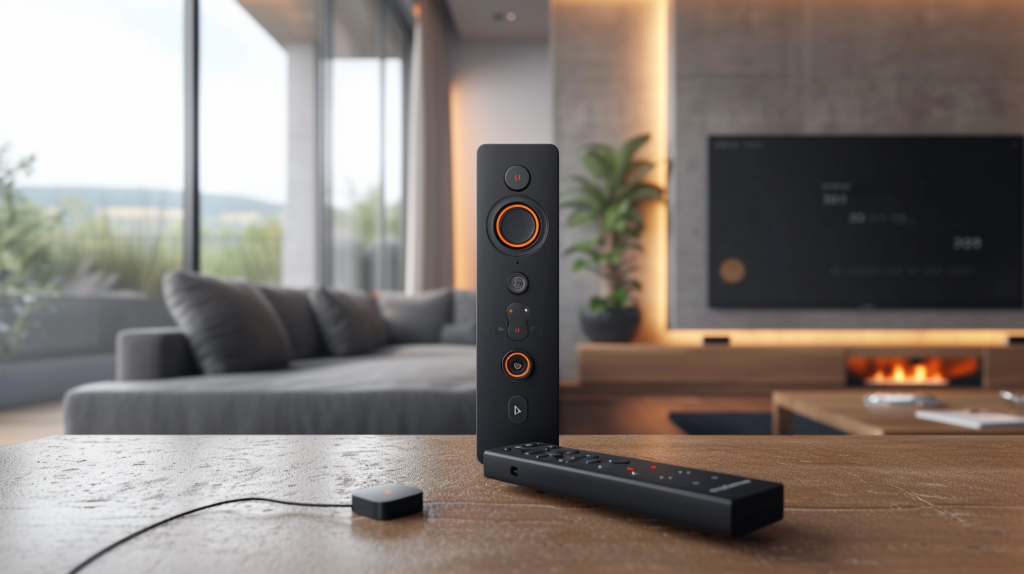
Once you have your Firestick remote successfully controlling volume levels on your soundbar, take some time to test out the audio at varying volume levels.
Play different forms of content like streaming movies, TV shows, music playlists and video clips.
Cycle through volume up/down across the full spectrum to understand the complete range and limits of your speaker setup.
Very high volumes can start to introduce distortion so it is ideal to keep levels in the middle ranges for consistent sound quality without damage risk.
Too low and dialogue and music can be difficult to decipher.
Find the sweet spot based on room dynamics and personal preferences.
You want to ensure you have enough headroom flexibility to turn the soundbar up during action scenes or down during commercial breaks in TV shows for example.
But balance that with reasonable levels that won’t irritate family members or neighbors.
Proper volume testing helps customize configurations for your unique home theater setup and usage.
Additional Sound Settings
In addition to volume control, also check what other sound settings are adjustable through the Firestick remote when connected to your soundbar system.
There may be audio presets like movie, music, sports that optimize EQ profiles based on content types.
You may also have tone settings to adjust bass or treble registers or even simulate surround sound capabilities.
Explore the advanced capabilities of both your streaming device and you speaker system to determine just how much can be controlled directly from the Firestick remote.
The more functionality at your fingertips, the better integrated experience you can create.
Volume is just the start – tailoring a broader spectrum of sound dynamics to suit different media enhances overall quality and performance.
Why Troubleshoot Issues
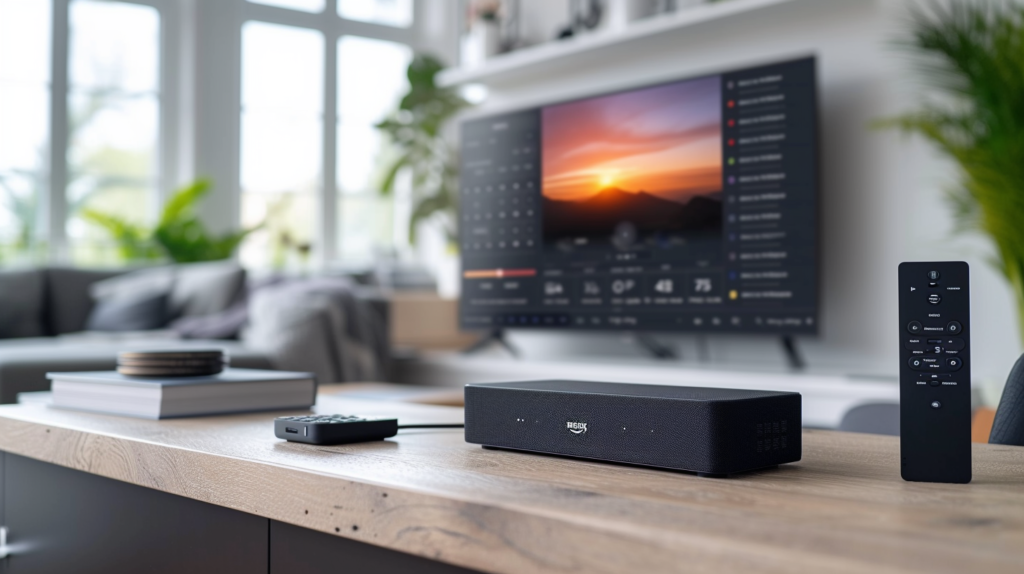
While utilizing your Firestick remote to control soundbar volume seems straightforward on the surface, there are a number of variables that can cause problems getting everything interconnected properly.
Compatibility problems, faulty hardware, complex configurations, user errors and more can all come into play.
That’s why being aware of basic troubleshooting is key to resolving the inevitable issues that will likely arise.
Walking through systematic checks like verifying settings across devices, trying different connections, repairing components and researching error codes or symptoms online will help isolate root causes when volume functions don’t work as expected.
There can be many reasons for unexpected problems so methodically testing potential factors is crucial.
Even devices that claim certain HDMI CEC or Bluetooth compatibility don’t always cooperate flawlessly.
And the more integrated components you have, the more room for discrepancies.
Don’t assume everything will just automatically connect and sync.
Taking ownership of customizing, optimizing and refining your setup leads to better user experiences.
Common Soundbar Issues
Some of the more common soundbar issues that can arise beyond just volume control problems from the Firestick remote include:
– No audio output at all from soundbar
– Audio and video falling out of sync
– Echo, humming or static through speakers
– System requiring frequent reboots
– Volume fluctuating or changing spontaneously
Knowing these types of technical glitches that can happen down the line empowers you to better pinpoint where problems may originate when trouble arises.
And having contingency plans to fall back on original remote controls, alternate cables or factory reset options helps resume functionality faster.
Don’t wait until problems occur to think through backups.
Who Needs Alternate Options
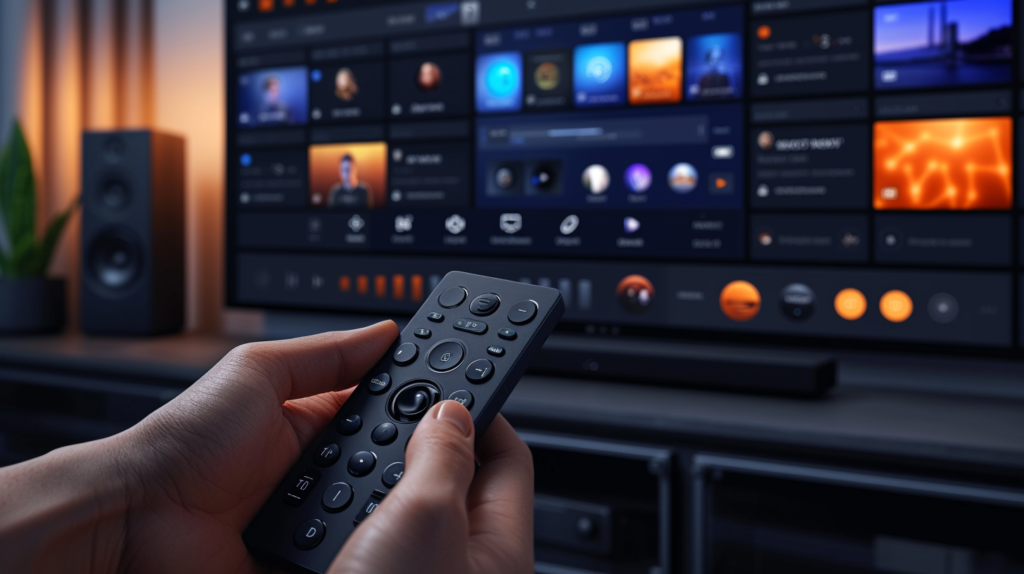
Even after trying various troubleshooting tips, some configurations may just not allow for the Firestick remote to act as the master volume control across your media ecosystem.
This can occur due to limited HDMI CEC support on older devices not designed for consolidated system control or basic Bluetooth connectivity issues.
That’s when leveraging alternate or fallback options helps restore critical functionality like volume adjustments from other devices.
Using original hardware remotes that came with your soundbar or TV guarantees native support even if universal control remains elusive.
And accessing on-board controls like buttons directly built into the soundbar itself or in connected TV audio settings provides alternate paths to regaining most core features like volume adjustments.
Mixing backup tactics prevents you from fully losing control when compatibility roadblocks emerge on preferred control methods.
When Alternates Work Best
Some examples where fallback device control options may be required if the Firestick remote won’t properly command volume levels on a soundbar include:
– Soundbars lacking HDMI ports
– Bluetooth connectivity problems
– Older devices with no CEC capabilities
– Conflicts controlling multiple connected devices
– Interference blocking remote signal
Having contingency remote access is especially crucial for soundbars placed in hard-to-reach places like mounted on walls or built into customized cabinetry.
Physical access becomes difficult so remote control is essential.
Testing backup methods upfront provides peace of mind before problems occur.
The key is avoiding complete dependency on a single control mechanism and resigning yourself to shortcuts like getting up frequently to manually adjust device settings.
Embracing redundancies tailors reliable access that works around functional gaps no single solution can overcome.
Conclusion
Controlling your soundbar volume with a Firestick remote simplifies your home entertainment setup by reducing remote clutter.
By pairing the devices and enabling HDMI CEC, you can adjust audio levels directly from your streaming remote.
Troubleshoot any issues that arise and leverage alternate sound options if needed.
With a consolidated control experience, you can sit back and enjoy your movies, TV shows and music with seamless access to essential settings like volume.
